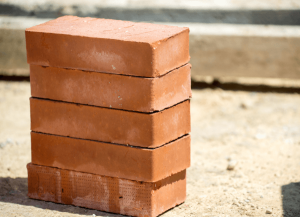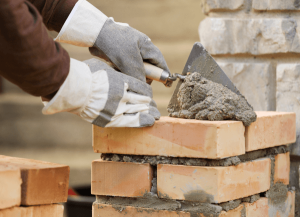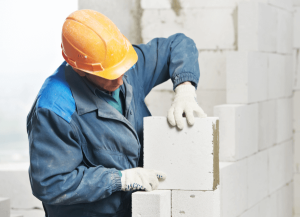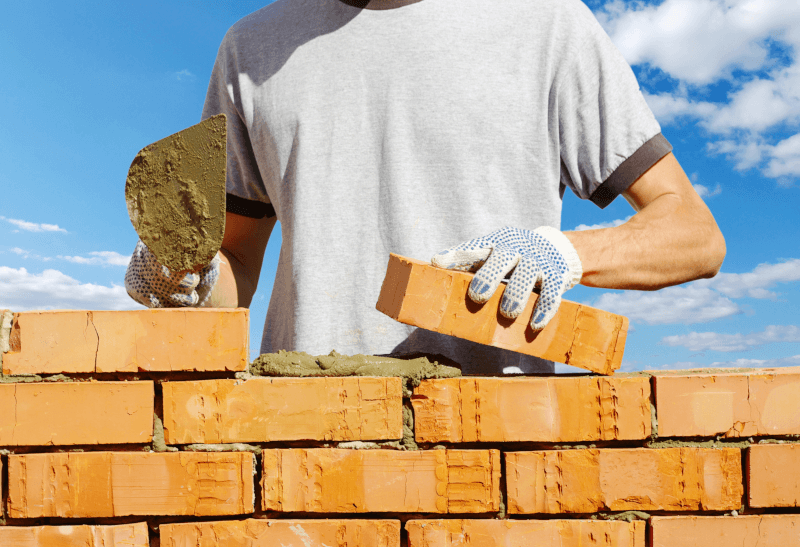Bricks are the most common building material, especially for home construction. There is a huge variety of bricks available, but which brick is best for your home?
Burnt clay bricks are the most common type of brick used in modern construction. They are strong, with good water resistance and insulation. Sand lime bricks are commonly used for home construction to support load-bearing walls. The best brick will depend on the vision and requirements for the home.
We’re going to talk about some of the common and best bricks that you can consider using for your home.
Types of bricks you can use for home construction
When it comes to bricks, there are so many options to choose from, including clay bricks, fly ash bricks, sand-lime bricks, and burnt clay bricks. All of these have specific advantages for certain styles and the potential to be the best brick for you. Let’s start by looking at our most popular home construction brick – a burnt clay brick.
Burnt Clay Bricks
Burnt clay bricks are a classic form of brick used in most of the ancient buildings in the world. Today, they are still the most common type of bricks used in construction, considered one of the best bricks for home construction. They are built by placing wet moulded clay in a kiln and firing them up.
Burnt clay bricks have a reddish colour and are used in a variety of ways. They can be used in masonry walls, foundations, and columns of buildings. When building walls, the bricks are plastered with mortar to improve their strength, water resistance, and insulation.
There are four classes of burnt clay bricks: first, second, third, and fourth class.
First Class Burnt Clay Bricks:
High-quality bricks are stronger and more durable than other classes of bricks. They are mainly used for building permanent structures. They are more expensive than other classes, but the are best quality bricks.
Second Class Burnt Clay Bricks:
Moderate-quality bricks made by ground-moulding. Their surfaces and edges are not as smooth as first-class bricks. They are strong and durable but need smooth plastering.
Third Class Burnt Clay Bricks:
Poor-quality bricks are mainly used for temporary structures. These aren’t used for home construction. They have uneven edges and rough surfaces.
Fourth Class Burnt Clay Bricks:
As a result of overburning, these are crushed and used as aggregates in manufacturing concrete. They are the most inferior quality bricks of all the classes.
Pairing first-class burnt clay bricks with quality bricklaying tools will give you a beautiful finish to your house exterior.
Fly Ash Bricks
Fly ash bricks are bricks made by mixing clay and fly ash together and burning them at very high temperatures. Fly ash is a byproduct of coal-fired power plants and can contain toxic materials like arsenic, mercury, and chromium. In fact, the production of fly ash bricks helps the environment by reusing and reducing the number of toxic materials released into the environment.
Fly ash bricks have a uniform shape since they’re cast in a machine mould. They are less porous than burnt clay bricks. In addition, they have a lower water absorption rate and a high compressive strength. They are a good alternative to burnt clay bricks. But larger fly ash bricks tend to get cracks and fractures, so they usually come in small sizes and are lightweight. They can be used for foundations, pillars, structural walls, as well as for places where fire resistance is required.
Sand Lime Bricks
Sand lime bricks are a mix of sand and lime. These bricks have a smooth and uniform finish and are fire-resistant. They have a grey colour, unlike reddish burnt clay bricks.
Sand lime bricks are strong and sturdy bricks with high compressive strength. They are the best bricks for load-bearing wall construction in homes and for multi-storied buildings. Sand lime bricks don’t need a high amount of mortar plaster, which reduces the cost of a construction project. These dense bricks don’t pass sound easily, so it provides good acoustic insulation.
Engineering Bricks
Engineering bricks are known for their high compressive strength, excellent load-bearing capacity, fire resistance, and cold resistance. They have a low porosity, which makes them more resistant to chemicals. They also can absorb a high amount of moisture. This makes sure the bricks don’t leak, crack, or crumble easily. Due to these qualities, engineering bricks are typically used to build basements, manholes, sewers, and retaining walls.
There are two classes of engineering bricks Class A and B. Class B are one of the most used bricks in modern construction. They are strong and dense, have a higher compressive strength than 75N/mm2, and have low water absorption (that is less than 7%). Class A bricks must have a compressive strength higher than 125 N/mm2, and their water absorption is less than 4.5%.
Fire Bricks
Fire bricks are made from a special clay called fireclay. It mostly contains alumina and silica. Because of this composition, these bricks can withstand extremely high temperatures. If you’re building a structure that should be resistant to fire and heat (chimney, furnaces, fireplaces, etc.), firebricks are the best choice for you. These bricks also won’t crack or break from the stress generated by heat.
Concrete Blocks
Concrete blocks are bricks that have a shape similar to clay bricks. But their composition is completely different. Concrete blocks are made from cement, sand, and water. This mixture is poured into custom moulds, which allow manufacturers to build various shapes and sizes. Concrete blocks are very good at reducing sound and blocking heat. They are used to build fences and facades or internal brickwork. You do need to be careful if you have to cut these blocks though. It is best practice to cut concrete blocks without dust to protect your lungs.
How to Identify Best-Quality Bricks?
 If you want your home to be strong and durable, you must use quality materials. This is why it’s important to know how to choose high-quality bricks. Here are some features of the best bricks for home construction:
If you want your home to be strong and durable, you must use quality materials. This is why it’s important to know how to choose high-quality bricks. Here are some features of the best bricks for home construction:
- The brick structure is uniform and homogenous.
- They don’t break when dropped from a height of 1m.
- The colour is bright and uniform.
- Bricks should be burnt well and have smooth surfaces and edges.
- Soundproof and lower thermal conductivity.
- When soaked in water for a day, there are no white deposits on them.
- When soaked in water for a day, they don’t absorb more than 20% by weight.
- Produce a ringing sound when two bricks are struck together.
Have you found the right brick for you?
The best brick for your home construction project would depend on your exact requirement and budget. For example, if you are building a fireplace in your home, fire bricks would be the best choice for you. But if you are building load-bearing walls for a multi-story home, sand-lime bricks would be a good choice. The type of brick heavily relies on your needs, requirements and overall desired aesthetic. You could easily find yourself assigning different bricks to different sections of the house. It’s always best to talk with your home planner about this.
But with the appropriate bricklaying equipment and skills, your dream home could be one brick choice away!
Want to learn more about brick homes? Check out our other Paragon Tools resources. We cover topics such as ‘is brick a good insulator?’ For quality bricklaying and masonry tools, jump onto our Paragon Tools products page. Looking for more advice? Feel free to give us a call! Contact Paul today at 0871618836



